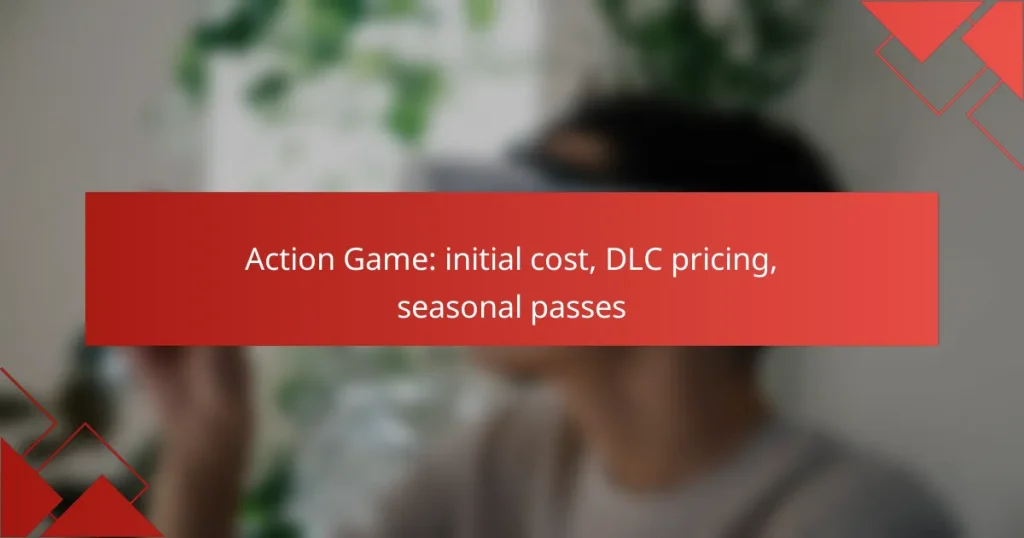The initial cost of action games in the UK generally falls between £30 and £60 for standard editions, influenced by factors like popularity and platform. Additionally, downloadable content (DLC) can range from a few dollars to around $30, depending on its scope and the game’s appeal. Seasonal passes, offering exclusive in-game content over time, typically cost between $10 and $30, providing players with ongoing value and engagement.
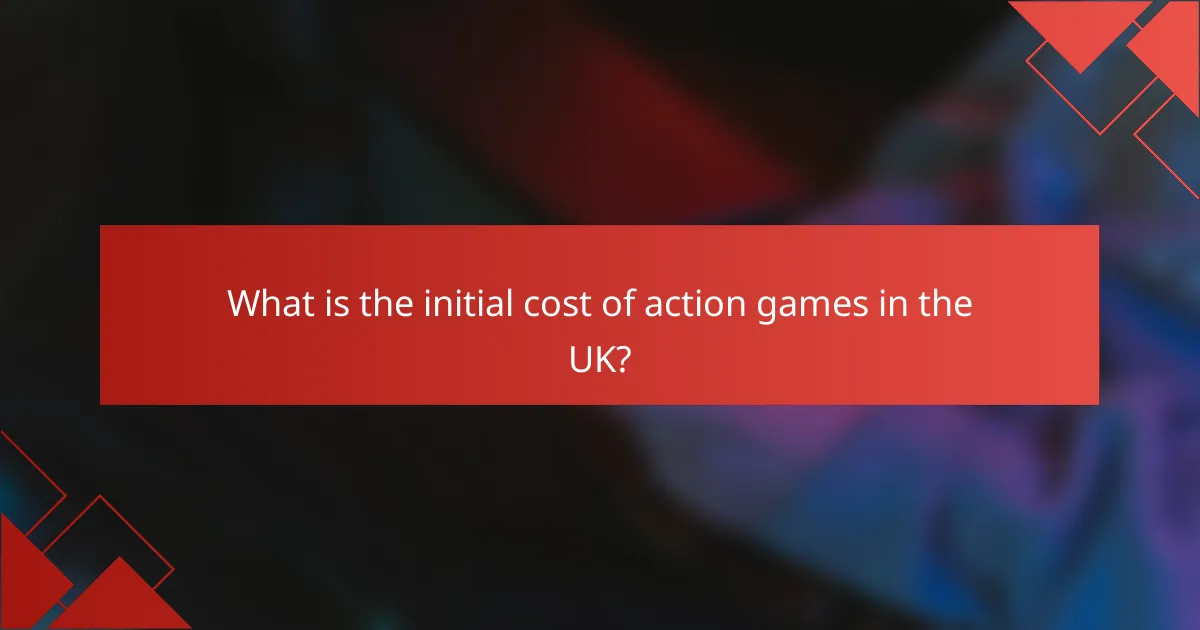
What is the initial cost of action games in the UK?
The initial cost of action games in the UK typically ranges from £30 to £60 for standard editions. Prices can vary based on factors such as the game’s popularity, platform, and whether it is a physical or digital copy.
Standard retail prices for popular titles
Standard retail prices for popular action games in the UK usually fall between £40 and £60. New releases from well-known franchises often start at the higher end of this range, while older titles may be available for less. Retailers may offer discounts during sales events, so it’s wise to shop around.
Digital download pricing on platforms like Steam
Digital download prices on platforms like Steam can be slightly lower than physical copies, often ranging from £30 to £50. Additionally, digital platforms frequently have sales, allowing players to purchase games at discounted rates. Keep an eye on seasonal sales for the best deals.
Price variations for different game editions
Action games often come in various editions, including standard, deluxe, and collector’s editions, which can significantly affect pricing. Deluxe editions may include extra content such as downloadable content (DLC) or in-game items, typically costing £10 to £20 more than the standard version. Collector’s editions can be even pricier, sometimes exceeding £100, due to physical collectibles and exclusive content.
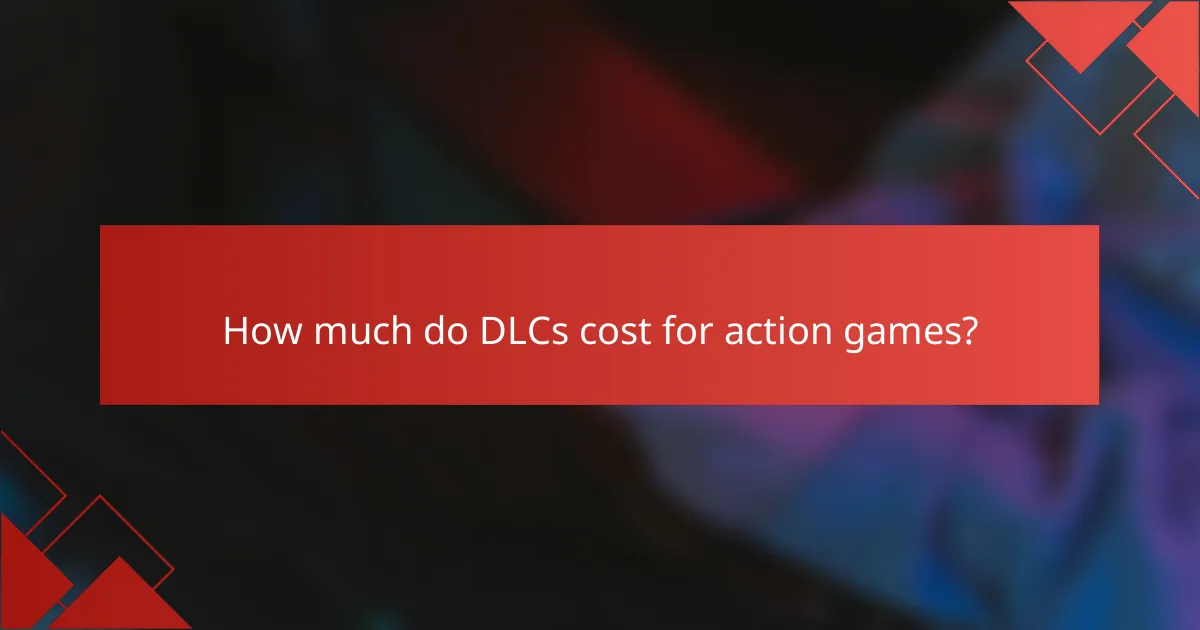
How much do DLCs cost for action games?
DLCs, or downloadable content, for action games typically range from a few dollars to around $30, depending on the content’s scope and the game’s popularity. Players should consider the value offered by the DLC, such as new missions, characters, or expansions, when deciding whether to purchase.
Average DLC pricing for major franchises
The average price for DLCs in major action game franchises tends to fall between $10 and $20. Popular titles often release multiple DLC packs, which can lead to cumulative costs that exceed the initial game price. Players should be aware that some franchises offer season passes, which bundle multiple DLCs at a discounted rate, usually around $30 to $50.
Examples of popular DLCs and their costs
For instance, the “Call of Duty” series frequently releases DLC packs priced around $15 each, featuring new maps and game modes. Another example is “Destiny 2,” where expansions can cost between $30 and $40, providing significant content additions. Players should also check for seasonal passes, like those in “Fortnite,” which can cost about $10 per season and offer exclusive rewards and challenges.

What are seasonal pass prices for action games?
Seasonal passes for action games typically range from around $10 to $30, depending on the game’s popularity and the content offered. These passes grant players access to exclusive in-game content, such as new maps, characters, or seasonal events, over a set period.
Typical pricing for seasonal passes
Most seasonal passes are priced between $10 and $30, with some premium titles charging up to $50. The price often reflects the amount and quality of content provided, as well as the game’s overall market position. Players should look for sales or bundles that may offer better value during promotional events.
Value comparison of seasonal passes vs. individual DLCs
When comparing seasonal passes to individual downloadable content (DLC), seasonal passes often provide better value for players who engage with the game regularly. For instance, if a game offers three DLCs at $10 each, a seasonal pass priced at $25 may include all three along with additional content, making it a more economical choice.
However, players who only play occasionally might find individual DLCs more suitable, as they can purchase content as needed without committing to a seasonal pass. It’s essential to evaluate personal gaming habits and preferences before deciding which option offers the best value.
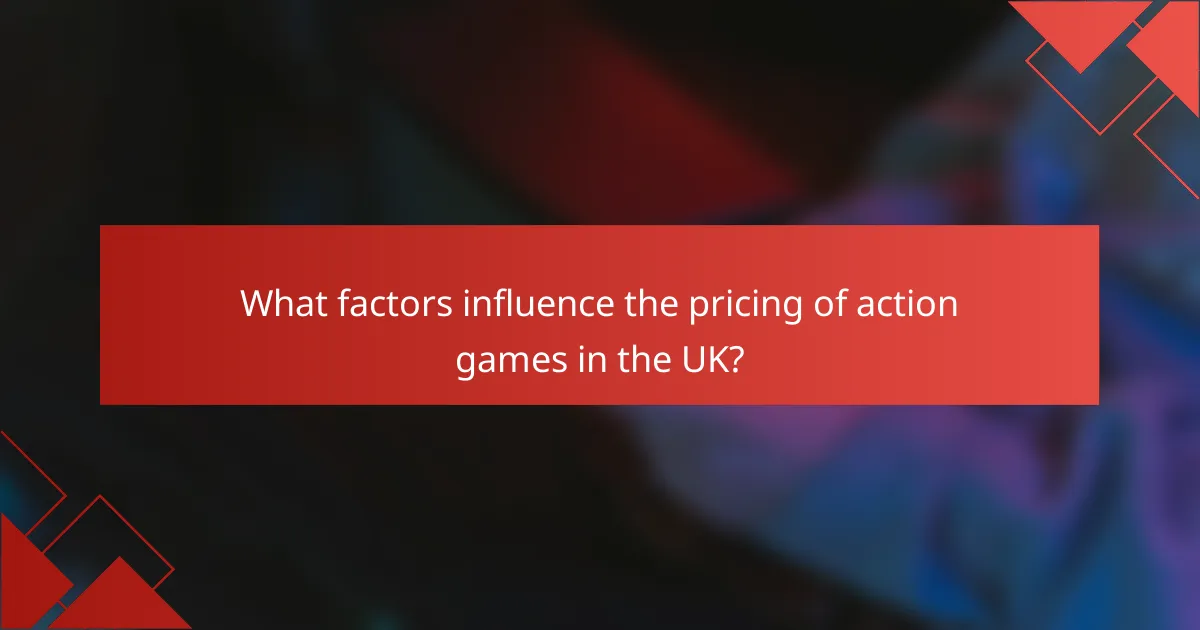
What factors influence the pricing of action games in the UK?
The pricing of action games in the UK is influenced by several factors, including market demand, competition, development costs, and publisher strategies. Understanding these elements can help consumers make informed purchasing decisions and anticipate potential additional costs like downloadable content (DLC) or seasonal passes.
Market demand and competition
Market demand plays a crucial role in determining the price of action games. When a game generates significant interest or hype, publishers may set higher prices to capitalize on this demand. Conversely, if a game faces stiff competition from similar titles, prices may be lowered to attract buyers.
In the UK, the popularity of franchises can also impact pricing. Established series often maintain higher price points at launch, while newer or less popular games may start at lower prices to encourage sales. Seasonal trends, such as holiday sales, can further influence pricing strategies.
Development costs and publisher strategies
Development costs are a significant factor in pricing action games. High-quality graphics, extensive game worlds, and complex gameplay mechanics require substantial investment, which is reflected in the retail price. Publishers often assess these costs against expected sales to determine a viable price point.
Additionally, publishers may adopt different strategies regarding DLC and seasonal passes. Some games offer a lower initial price but charge for additional content, while others may include more content upfront at a higher price. Understanding these strategies can help consumers gauge the total cost of ownership for a game over time.
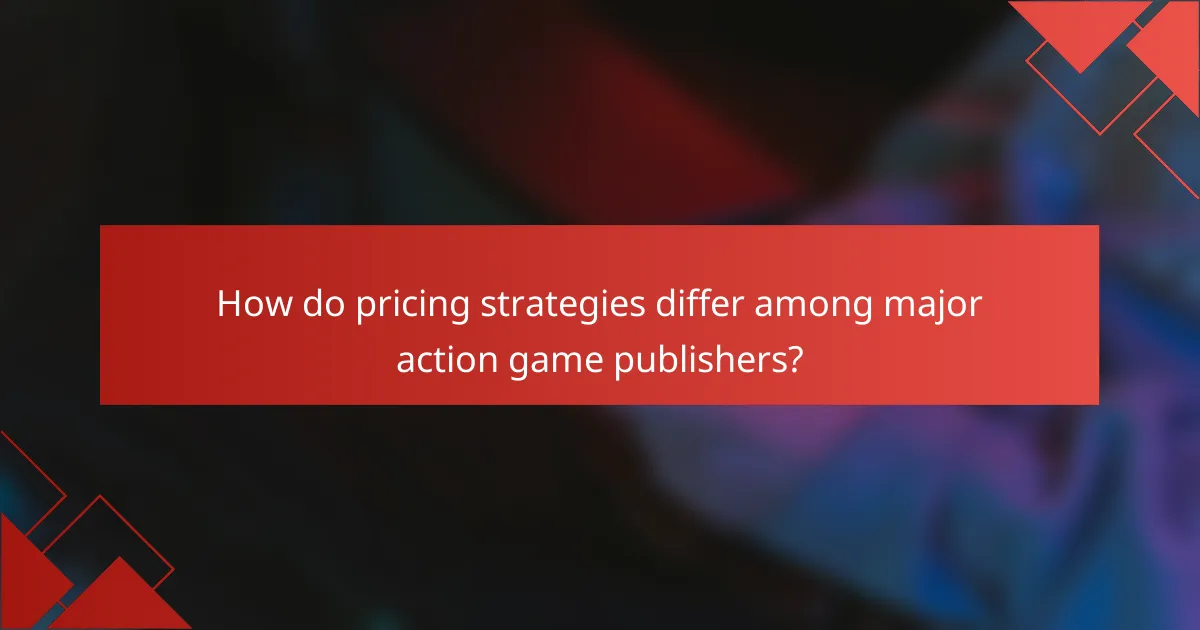
How do pricing strategies differ among major action game publishers?
Major action game publishers employ various pricing strategies that can significantly impact players’ initial costs and ongoing expenses. These strategies often include base game pricing, downloadable content (DLC) pricing, and seasonal passes, each tailored to maximize revenue while catering to player preferences.
Pricing models of Activision and Electronic Arts
Activision and Electronic Arts (EA) typically adopt a premium pricing model for their flagship titles, often launching games at around $60 to $70. Both publishers frequently offer DLC that expands gameplay, with prices ranging from $10 to $40, depending on the content’s depth and appeal.
Seasonal passes are another common feature, allowing players to access multiple DLCs at a discounted rate, usually priced between $30 and $50. This model encourages players to invest upfront for ongoing content, enhancing player retention and engagement.
Comparison of Ubisoft’s pricing approach
Ubisoft’s pricing strategy often emphasizes value through bundled content. While their base games also retail around $60 to $70, they frequently offer extensive season passes that can provide substantial savings, typically priced between $30 and $40 for access to all DLCs released within a season.
Additionally, Ubisoft tends to implement free-to-play elements in some titles, allowing players to access core gameplay without upfront costs. This approach can lead to microtransactions for cosmetic items or expansions, appealing to a broader audience while generating revenue through optional purchases.

What are the trends in action game pricing for 2024?
In 2024, action game pricing is increasingly influenced by innovative models, subscription services, and evolving consumer expectations. Players can expect a mix of upfront costs, downloadable content (DLC) pricing, and seasonal passes that reflect these trends.
Emerging pricing models in the gaming industry
New pricing models are reshaping how action games are monetized. Free-to-play games often rely on microtransactions, allowing players to access the core experience without upfront costs while offering in-game purchases for cosmetic items or enhancements.
Additionally, hybrid models are gaining traction, where games are sold at a lower initial price but include optional paid content. This strategy can attract a broader audience while still generating revenue through DLC and expansions.
Impact of subscription services on game pricing
Subscription services like Xbox Game Pass and PlayStation Plus are changing the landscape of action game pricing. These platforms offer access to a library of games for a monthly fee, which can reduce the perceived value of individual titles.
As a result, developers may adjust their pricing strategies, focusing on delivering high-quality content that encourages players to subscribe rather than purchase outright. This shift can lead to more frequent updates and expansions as developers seek to retain subscribers.
Future predictions for DLC and seasonal pass pricing
Looking ahead, DLC and seasonal passes are likely to see varied pricing structures, often influenced by player engagement and content depth. Expect prices for DLC to range from around $10 to $30, depending on the amount of content offered.
Seasonal passes may also become more common, typically priced between $20 and $50, providing players with access to exclusive content over a defined period. Developers will need to balance pricing with perceived value to maintain player interest and satisfaction.
